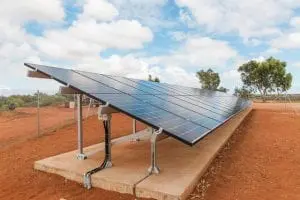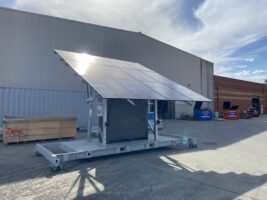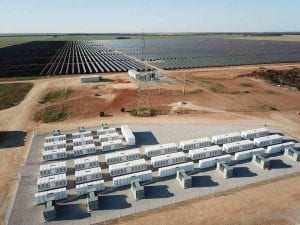For more than a decade, Australia’s electricity system has been undergoing a major transformation. The traditional system of large power plants fuelled by coal, gas or hydro is becoming more diversified with new energy sources, like solar and wind, being generated and distributed locally.
New low carbon technologies such as rooftop solar PV and enabling technologies like batteries, smart meters and electric vehicle charging infrastructure have dramatically increased the popularity of small to medium distributed energy systems connecting to the national grid.
The transition from a centralised electricity network to a customer-led market has a range of benefits and opportunities for businesses and households, as well as our power system. These new technologies can help reduce greenhouse gas emissions and lower customers’ energy bills.
Yet complex grid connection requirements mean that it is not always easy for existing and emerging technologies to connect to the electricity grid.
To enable the transition to a customer-led market, it is important that connection processes are simple and cost effective for the customer while at the same time maintain the safety and performance of the electricity networks.
Developing effective grid connection standards
Energy Networks Australia has identified the importance of developing more consistent connection processes across the different distribution networks to smooth the transition to a customer-led market.
To contribute to this process, a new report by ClimateWorks Australia and Seed Advisory – Plug and Play 2 – has examined how the development of new requirements for accessing the network could be made more equitable and transparent for customers, while maintaining system reliability and security.
The report is particularly relevant for the connection of business customers’ medium-sized distributed energy installations.
For the report, researchers interviewed representatives from the gas, telecommunications and aviation industries about the characteristics of an effective process for developing industry standards and codes of practice.
Their feedback highlighted two important features; the need for regulatory oversight, and active and informed representation of customers’ interests.
Current arrangements are complex and difficult
Currently, grid connection is controlled by a complex array of laws, requirements and standards that vary between different networks.
There are currently 15 energy distributors operating across all the states and territories. Under state laws, the distributors are responsible for managing the safety and performance of the network.
To meet these responsibilities, distributors control what technologies are connected to the network and where. There is little regulatory oversight of grid connection processes, and substantial
variation between distribution networks.
Even within a state, grid connection processes can differ one from another. Distributors can base their access requirements on Australian Standards, International Standards, their own particular conditions or a combination of these.
The variation and complexity of requirements makes the connection process uncertain, time consuming, and costly for customers.
Need for customer representation
There is limited customer representation in the development of grid connection standards. While networks are explicitly required to consider network safety and performance, there are no specific requirements that balance customer interests against these features.
Even where Australian Standards are used, there is no guarantee that the expert panels developing the Standards include customer representatives.
Improving the process
The Plug and Play 2 report identifies three actions that could improve the process for developing network access requirements.
Firstly, there needs to be better oversight and transparency of distribution network access requirements.
A clear and publicly accessible framework should be developed to explicitly define what a safe and secure network looks like, including guidance on the acceptable (and unacceptable) incidence of foreseeable events.
Initially, this framework may just document the ‘rules of thumb’ that networks currently use to manage requests for access in specific locations.
Distribution networks should publish their findings from applying the framework and update the framework regularly to incorporate these learnings.
The desired outcome is to achieve a single evidence-based framework that can be applied across Australia, with networks setting their individual grid connection requirements to comply with this
framework.
Energy Networks Australia is probably best placed to undertake the role of developing the framework.
Secondly, Australian Standards could provide an important avenue for customers’ voices to be heard in the development of grid connection standards.
While Australian Standards already form a central component of some distributors’ network access requirements, the expert panels that develop Australian standards often lack substantial customer
representation.
Improving customer representation on these panels would provide a significant step towards developing fair and effective grid connection standards.
However, funding may be needed to fully engage more capable customer and industry representatives in the standards development process.
Finally, in the absence of funding for improved customer participation in the development of Australian Standards, then International Standards should be adopted, with only the minimum amendments to account for specific Australian conditions.
A broad range of stakeholders are represented at the international level and this could provide a cheaper, more transparent and adaptive alternative to the current model both for Australian electricity customers and for the economy as a whole.
Effective distribution network connection requirements are essential to enable embedded generation to progress equitably and transparently. These actions would balance customer interests alongside network safety and performance requirements.
The improved requirements would be evidence-based, consistent across different networks, and balance the interests of different energy market participants to create better outcomes for the economy, the grid and the environment.
Sarah Fumei is a project manager at ClimateWorks Australia











